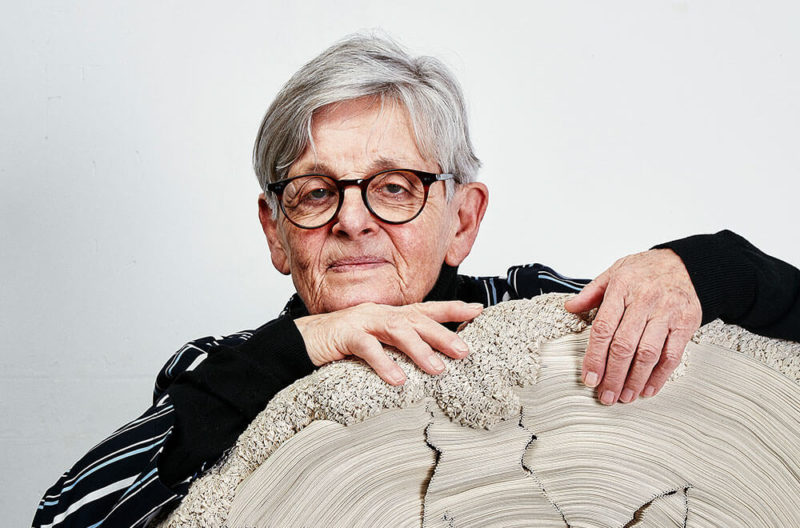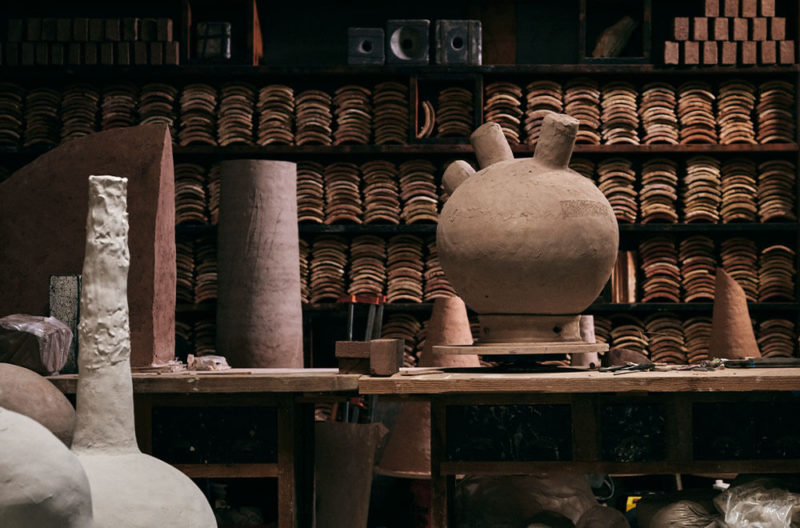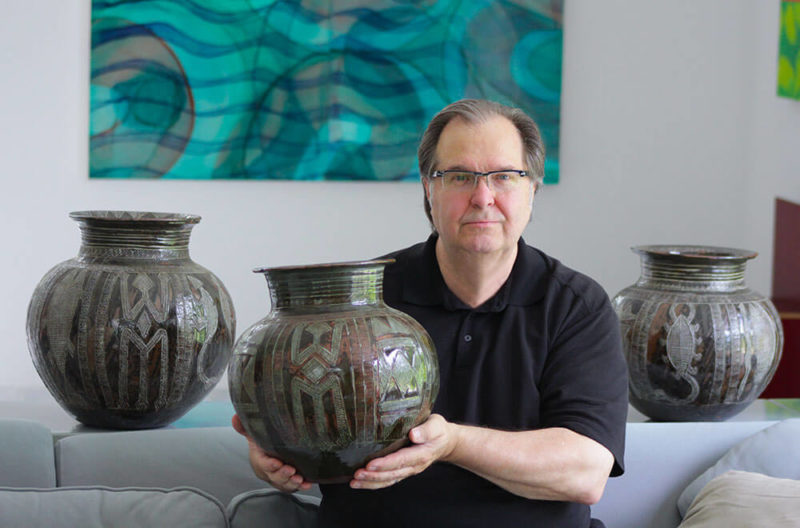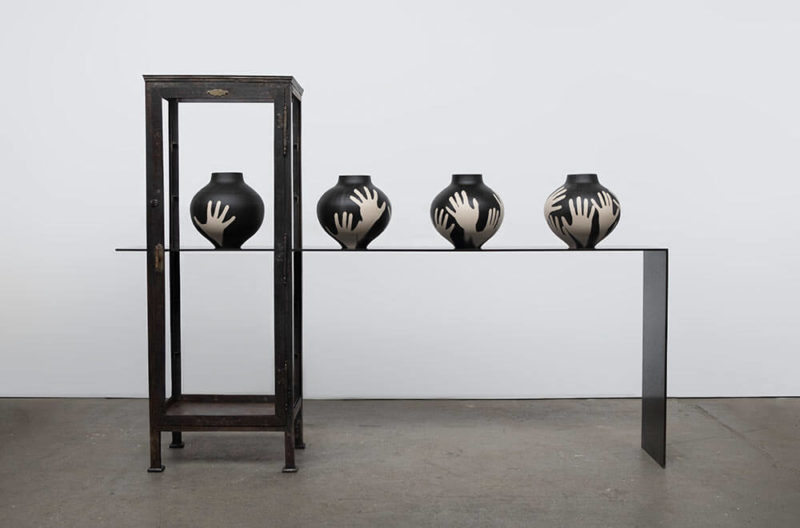Les Flammes
From Neolithic statuettes to Grayson Perry – via Marcel Duchamp – MAD demonstrates that ceramics continue to be open to reinvention.
Musée d’Art Moderne de la Ville de Paris
15th October 2021 – 6th February 2022
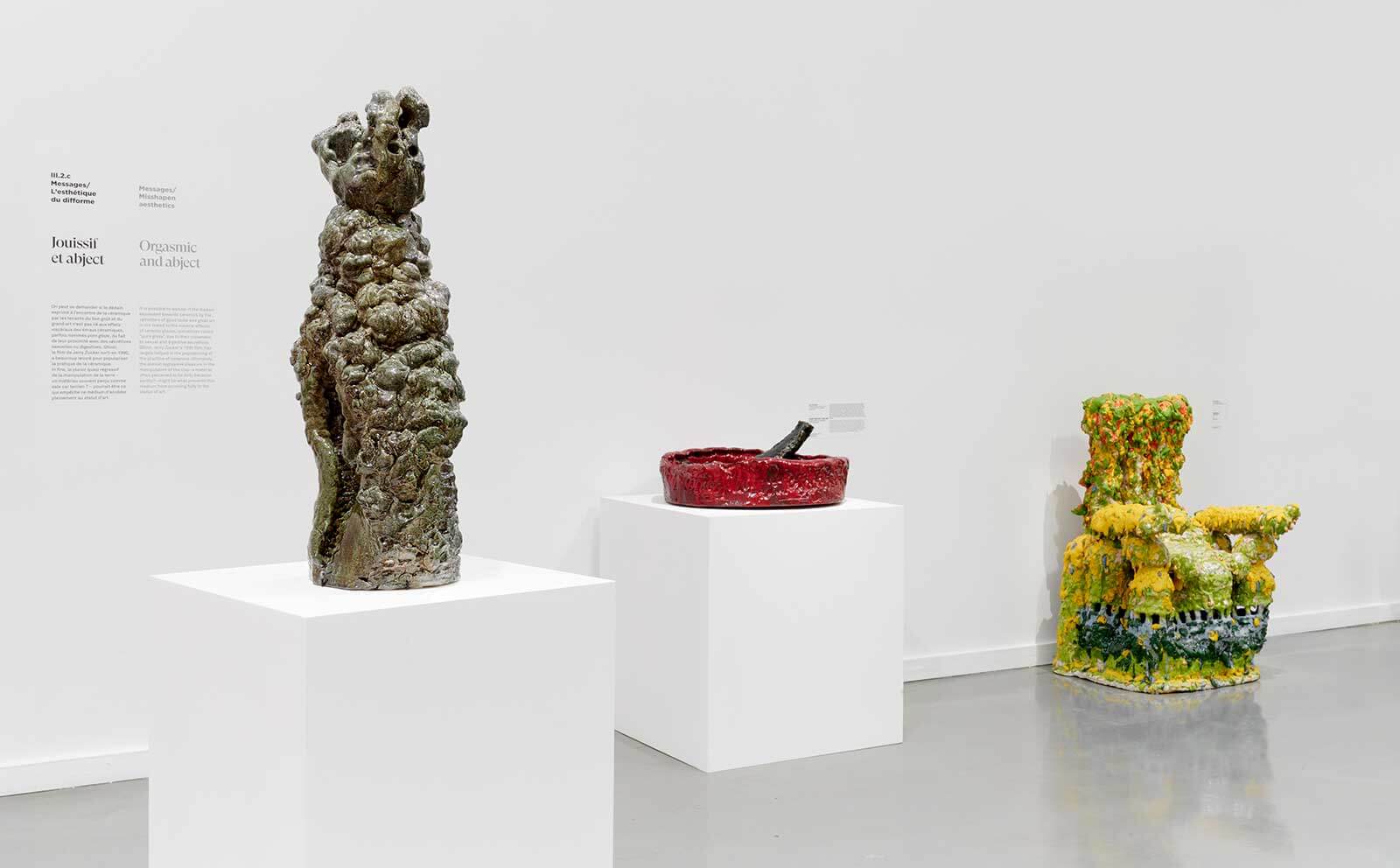
Exhibition view
COURTESY: Musée d’Art Moderne de la Ville de Paris / © Pierre Antoine
AFTER LURKING IN the shadows of the art world and being sneered at for decades, the number of exhibitions dedicated to ceramics has grown exponentially over the last few years. A new show at the Musée d’Art Moderne de Paris presents an exhaustive exploration into the medium through 350 works. Titled ‘Les Flammes’ (The Flames), it spans continents and epochs, from established names to anonymous makers. What emerges is the heterogeneous versatility of ceramics across art, decorative arts, craftsmanship and design.
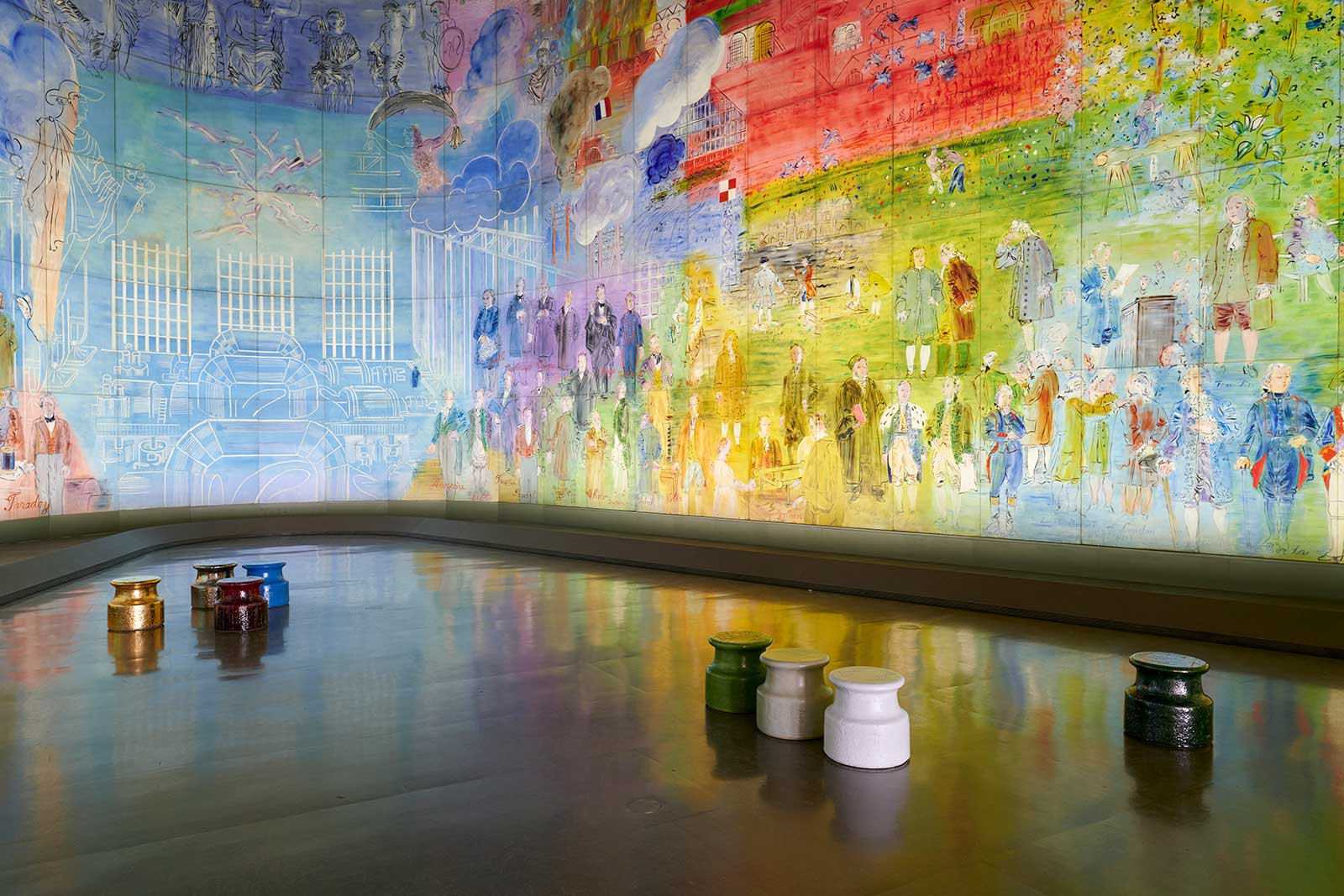
Exhibition view
COURTESY: Musée d’Art Moderne de la Ville de Paris / © Pierre Antoine
The exhibition is the third in a trilogy curated by Anne Dressen, following ‘Decorum’ about tapestries in 2013 and ‘Medusa’ about jewellery in 2017. In each, Dressen scopes out ethnographic diversity in the field, intermingling high and low culture. “I wanted to show how artists – unlike historians and museum curators – don’t compartmentalise objects according to hierarchies or categories and don’t distinguish between what is art and what isn’t,” she says.
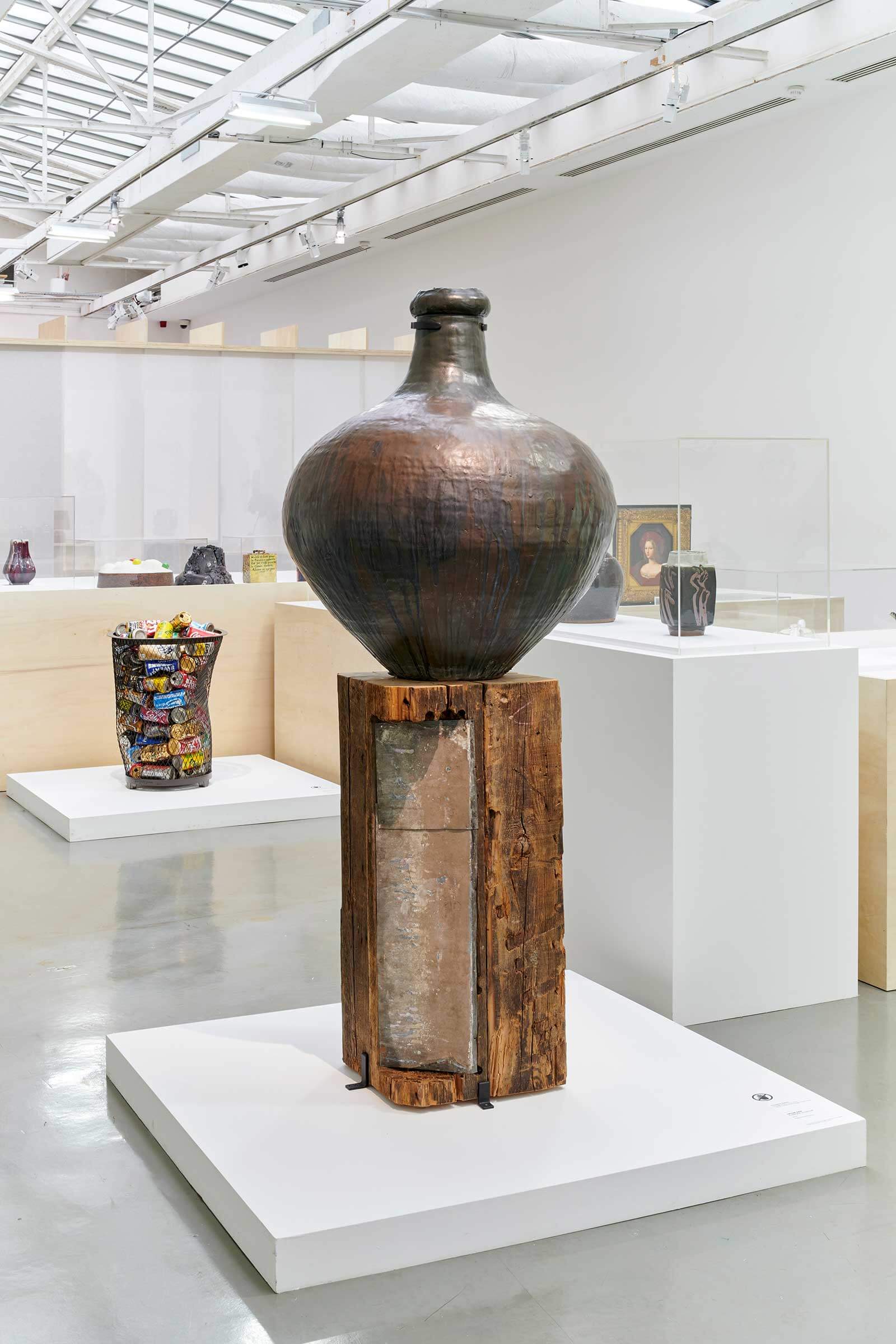
Exhibition view
COURTESY: Musée d’Art Moderne de la Ville de Paris / © Pierre Antoine
From the outset, Dressen presents everything on an equal playing field. Greeting visitors is Clare Twomey’s in situ installation ‘Monument’ (2021) – a re-iteration of a work created in 2009 with scraps from Johnson Tiles in Stoke-on-Trent. Evocative of a hilly landscape, it’s been remade with debris of broken tableware from French porcelain factories. “By looking at this work attentively, one realises that it’s composed like a painting with a very precise approach to colours and forms,” Dressen says.
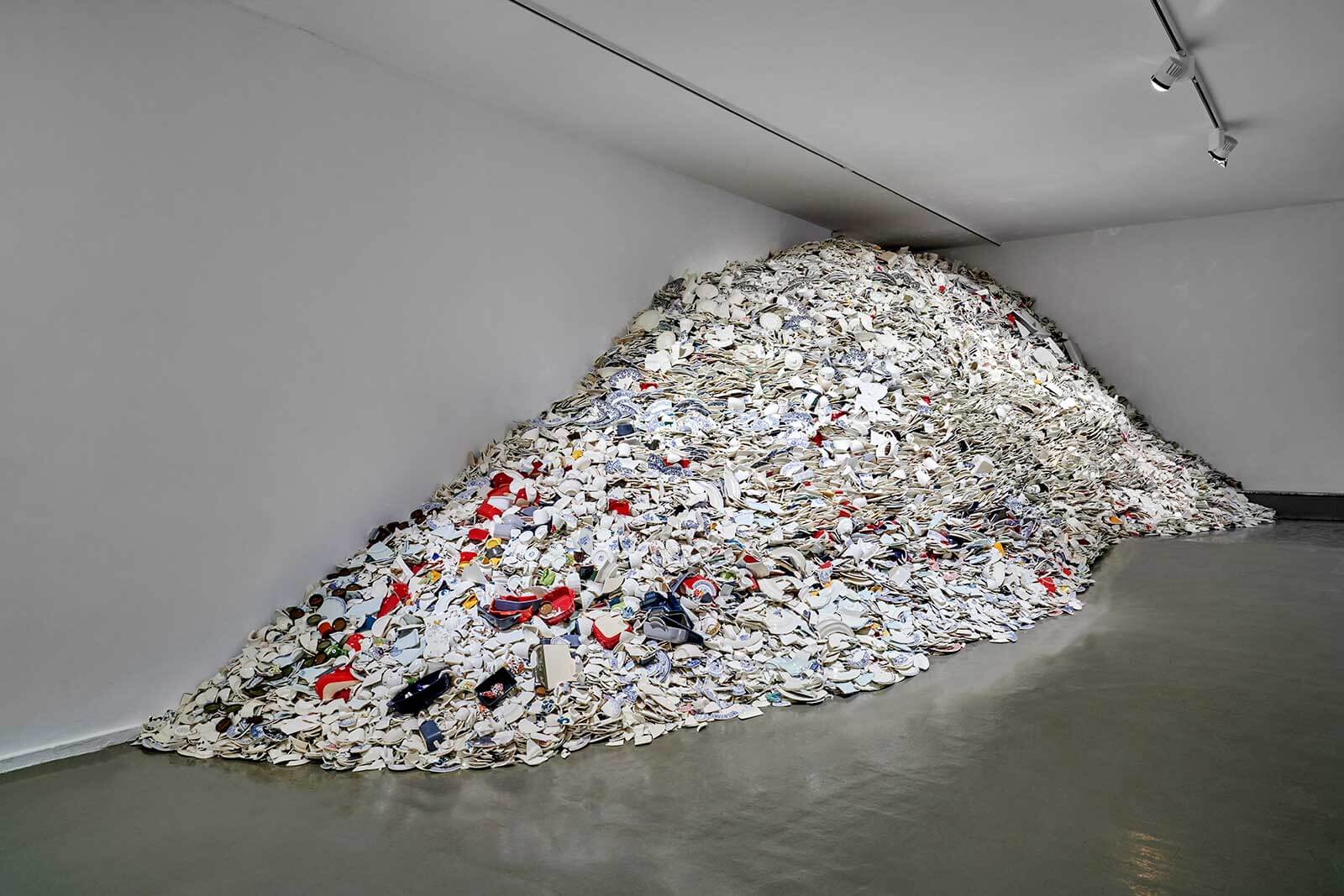
Clare Twomey, ‘Monument’, 2021
COURTESY: Musée d’Art Moderne de la Ville de Paris / © Pierre Antoine
Next to this is Vidya Gastaldon’s painting of a teapot and poltergeist from 2012, and Jean-Pierre Raynaud’s terracotta stele from 1986; all three introductory pieces attest to how ceramics form part of our daily lives. They segue to a display of unfired clay pieces underlining part of the creative process.
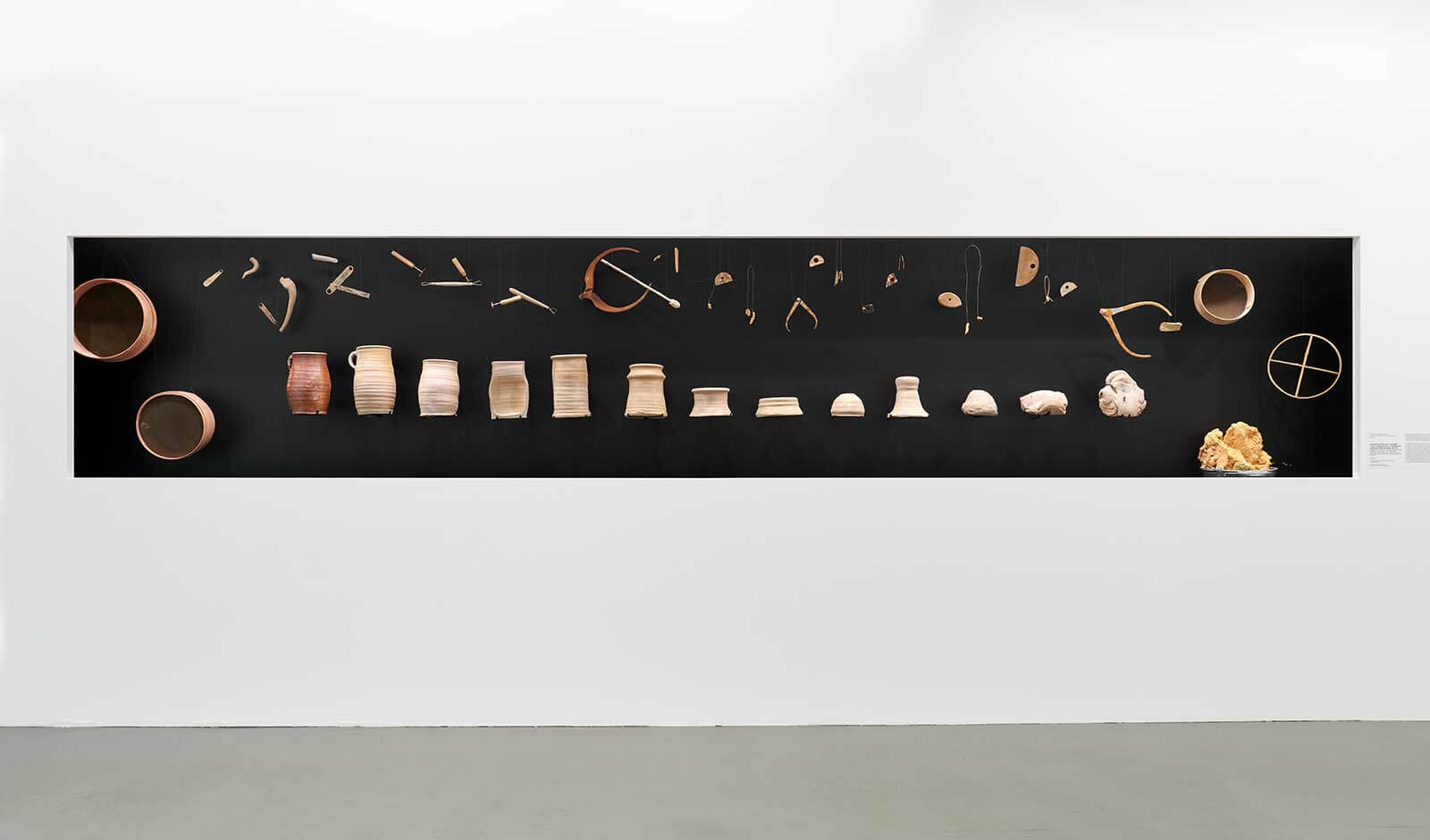
Exhibition view
COURTESY: Musée d’Art Moderne de la Ville de Paris / © Pierre Antoine
The exhibition has been divided into three parts: Techniques, Uses and Messages. Each has been treated in a didactic yet transhistorical and transcultural way, moving seamlessly between different eras and cultures. For instance, Neolithic and Egyptian statuettes displayed in front of Edmund de Waal’s ‘Once is as good as never’ (2016) – a white bookcase lined with small white vases – convey how techniques have advanced through the centuries. Such confrontations and encounters typify the exhibition.
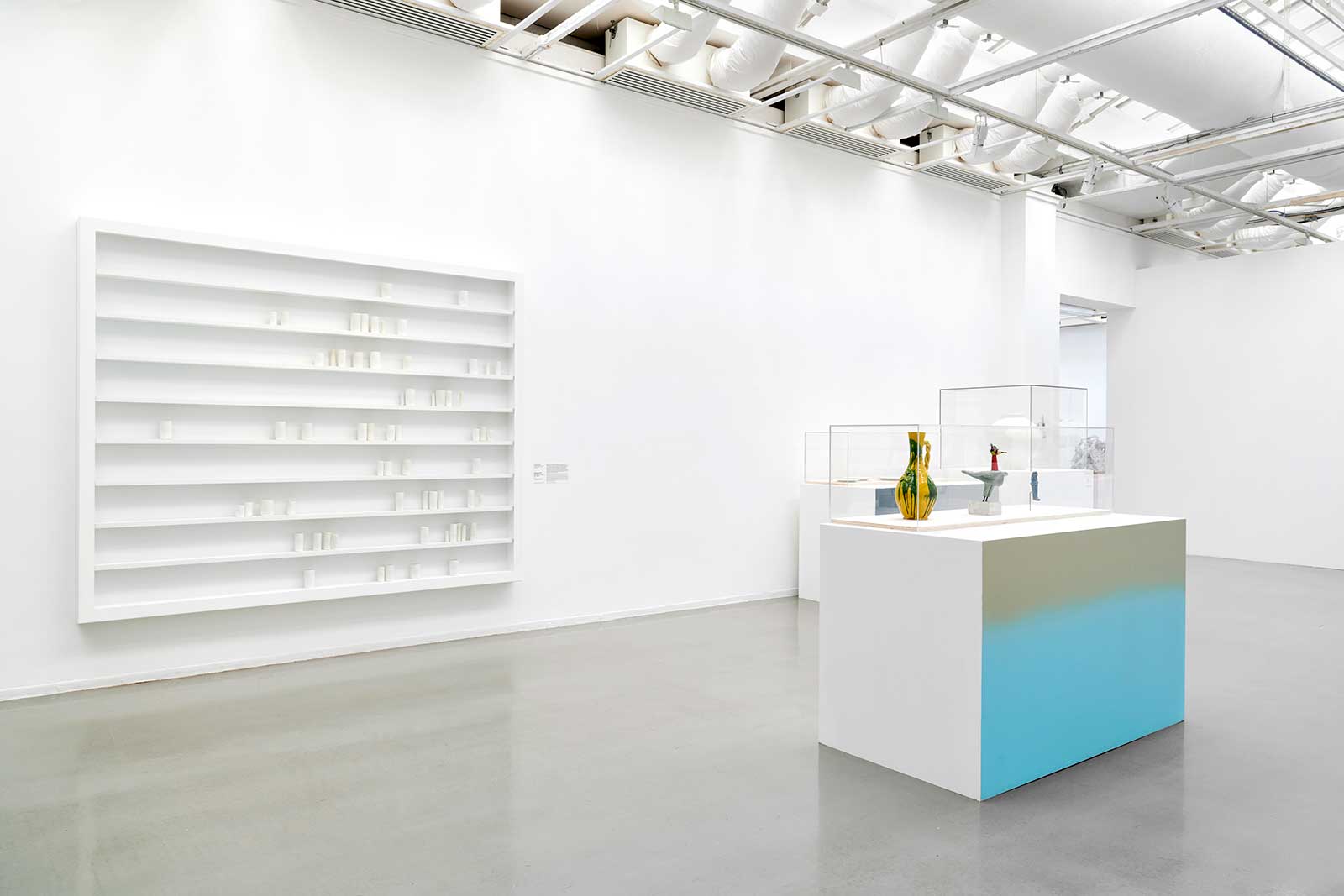
Exhibition view with Edmund de Waal’s ‘Once is as good as never’, 2016
COURTESY: Musée d’Art Moderne de la Ville de Paris / © Pierre Antoine
The broad array of clay and firing techniques, as well as decorating and glazing finishes, are illustrated in ‘Techniques’. Contemporary sculptures such as Rebecca Warren’s ‘The Wise Virgin’ (2012), an abstract clay work in white, pale pink and blue, overlook vitrines displaying such objects as a Qing dynasty jar enamelled with flowers and a bowl by the celebrated British ceramicist Lucie Rie, placed next to the Duke and Duchess of Cambridge’s wedding mug. If some techniques are vernacular, others are unique – such as Ron Nagle’s ‘Captive Morgan’ (2012) – a purple earthenware sphere with an orange and white streak.
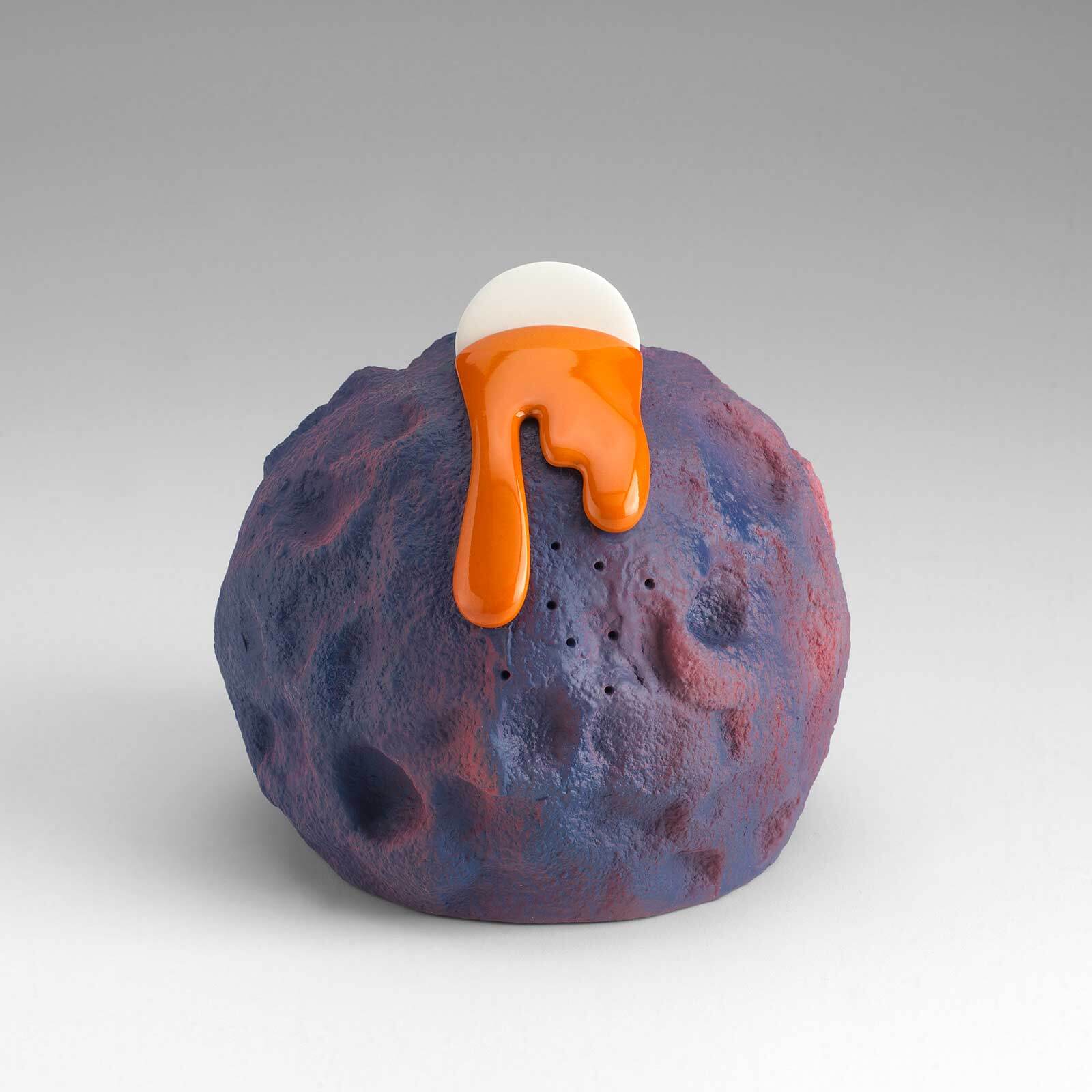
Ron Nagle, ‘Captive Morgan’, 2012
COURTESY: © Ron Nagle & Matthew Marks Gallery
Each section offers an eclectic congregation of works presented in a helter-skelter fashion, shifting scales, aesthetics and approaches. In ‘Uses’, one is introduced to how some ceramics are, of course, not utilitarian at all. The star example is Marcel Duchamp’s ‘Fountain’ (1963, replica of 1917 original), a readymade porcelain urinal that the artist famously designated as a work of art and that has become a twentieth-century icon.
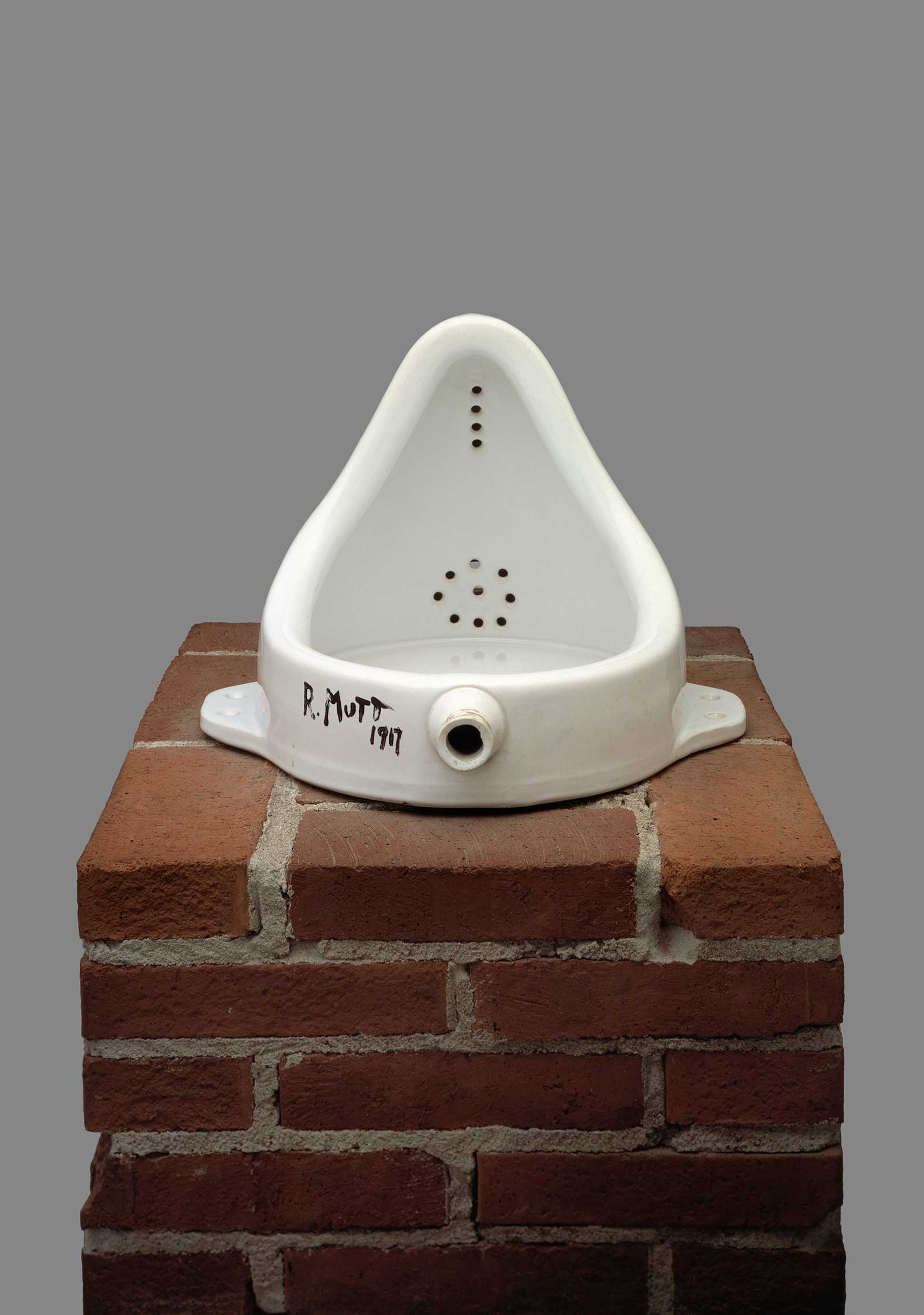
Marcel Duchamp and Ulf Linde, ‘Fountain’, 1963 (replica of the 1917 original)
COURTESY: © Collection Moderna Museet, Stockholm, Donation from the Friends of Moderna Museet, 1965 © Association Marcel Duchamp / ADAGP, Paris 2021
Nearby is Lucile Littot’s ‘The Happy Accidents of the Swing’ (2017) – a gorgeous sculpture of a dislocated harlequin on a gold swing. Contrasting with such artworks are “containers” from Gio Ponti’s sweet box, ‘The Ballet’ (1925), topped with a dancing couple, to contemporary bowls by Takuro Kuwata and Jean Girel.
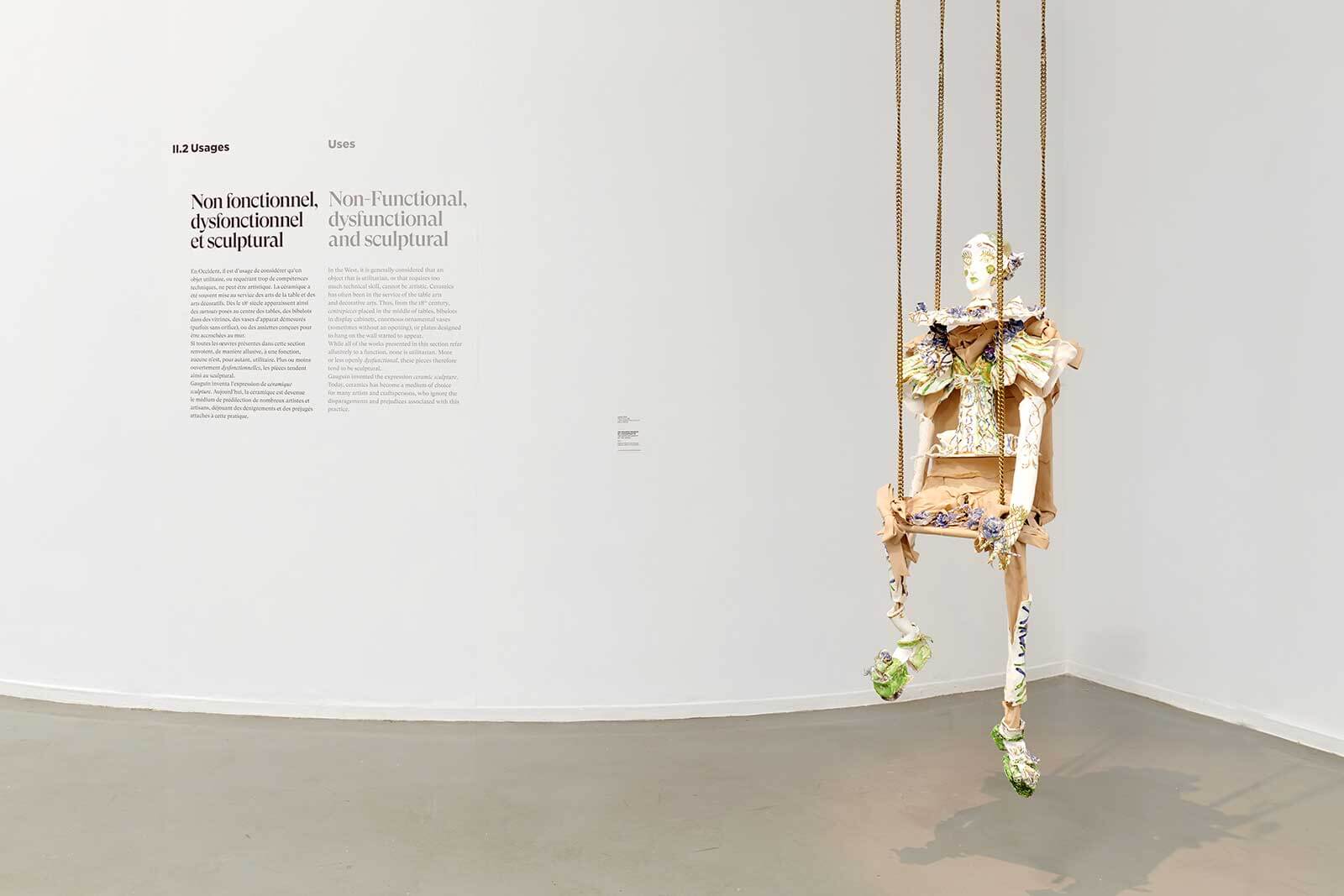
Exhibition view with Lucile Littot’s ‘The Happy Accidents of the Swing’, 2017
COURTESY: Musée d’Art Moderne de la Ville de Paris / © Pierre Antoine
Other pieces relate to rituals and religious symbolism. Miquel Barceló’s ‘Wall of Heads’ (2021) – a marvellous installation of misshapen, pierced bricks evoking a succession of heads – was inspired by the dry stone walls in the artist’s native Mallorca. It recalls an earlier relief fresco made for a Mallorca cathedral and how the artist had been enthralled by Dogon women potters in Mali. Further along, ‘Tree of Life’ (2004), an anonymous, intricately painted Mexican terracotta sculpture, the left half in red, the right half in blue, reflects on life’s trajectory through incorporated figures and symbols.
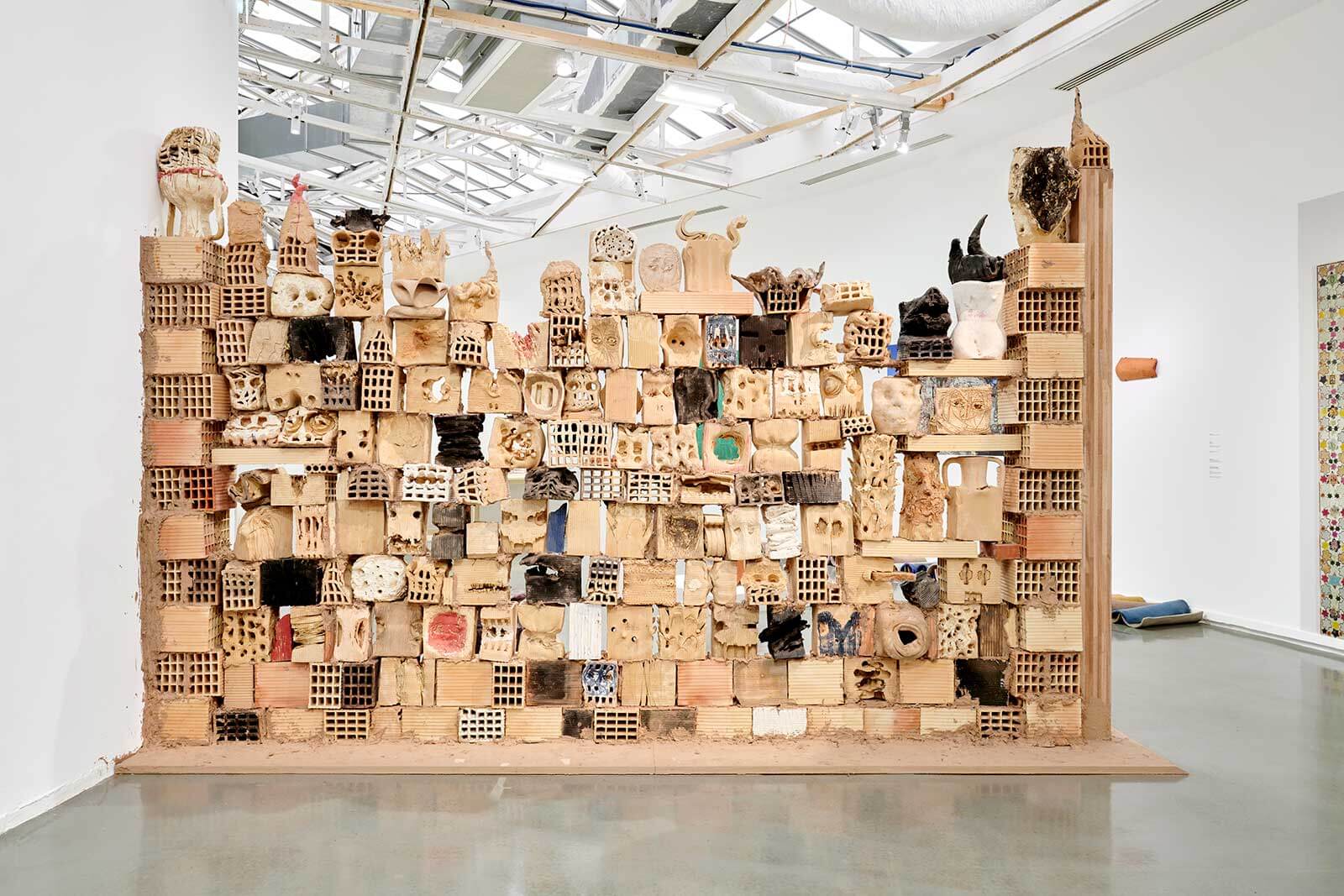
Miquel Barceló, ‘Wall of Heads’, 2021
COURTESY: Musée d’Art Moderne de la Ville de Paris / © Pierre Antoine
The last section, ‘Messages’, brings together trompe-l’oeil effects as well as “voluntary sloppiness” (cue Sterling Ruby’s blood red, liquescent-looking ceramics) in addition to avant-garde, political works. The link between some of them seems a little tenuous. Inevitably, though, this is where one finds Grayson Perry’s ‘Transvestite Looking in Mirror’ (2009), an enamelled earthenware portraying Perry’s alter-ego, Claire, putting on lipstick. It was made six years after the artist won the 2003 Turner Prize with his glazed ceramic jars adorned with figures and socio-political satire.
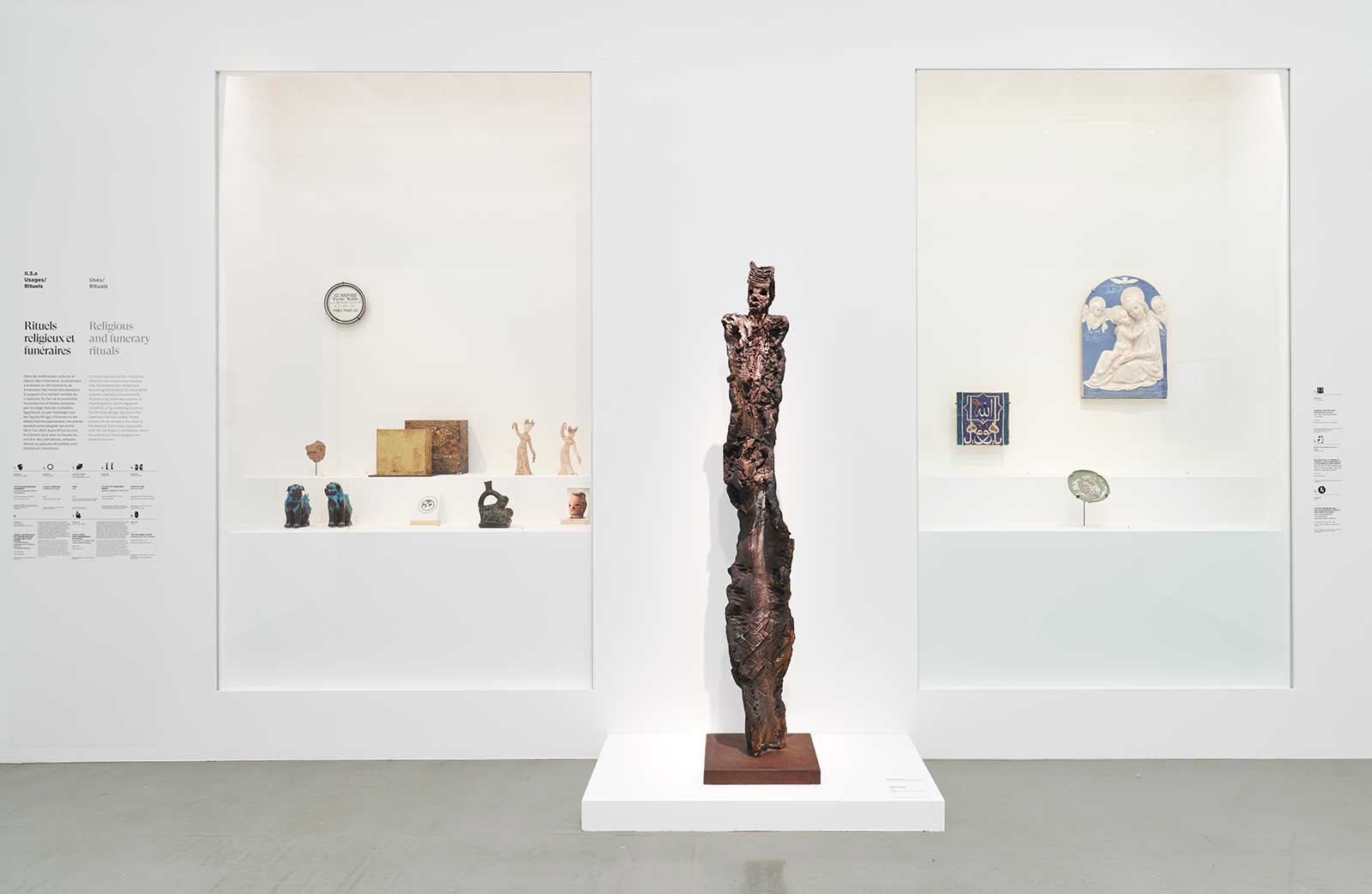
Exhibition view
COURTESY: Musée d’Art Moderne de la Ville de Paris / © Pierre Antoine
“Grayson Perry once said that it had been harder to be accepted as a ‘potter’ than for his transvestite identity,” Dessen says. “This shows how this medium has long been underestimated even though ceramics have long attracted artists. Today, acceptance is easier but prices still differ between a painting and a ceramic by the same artist.”
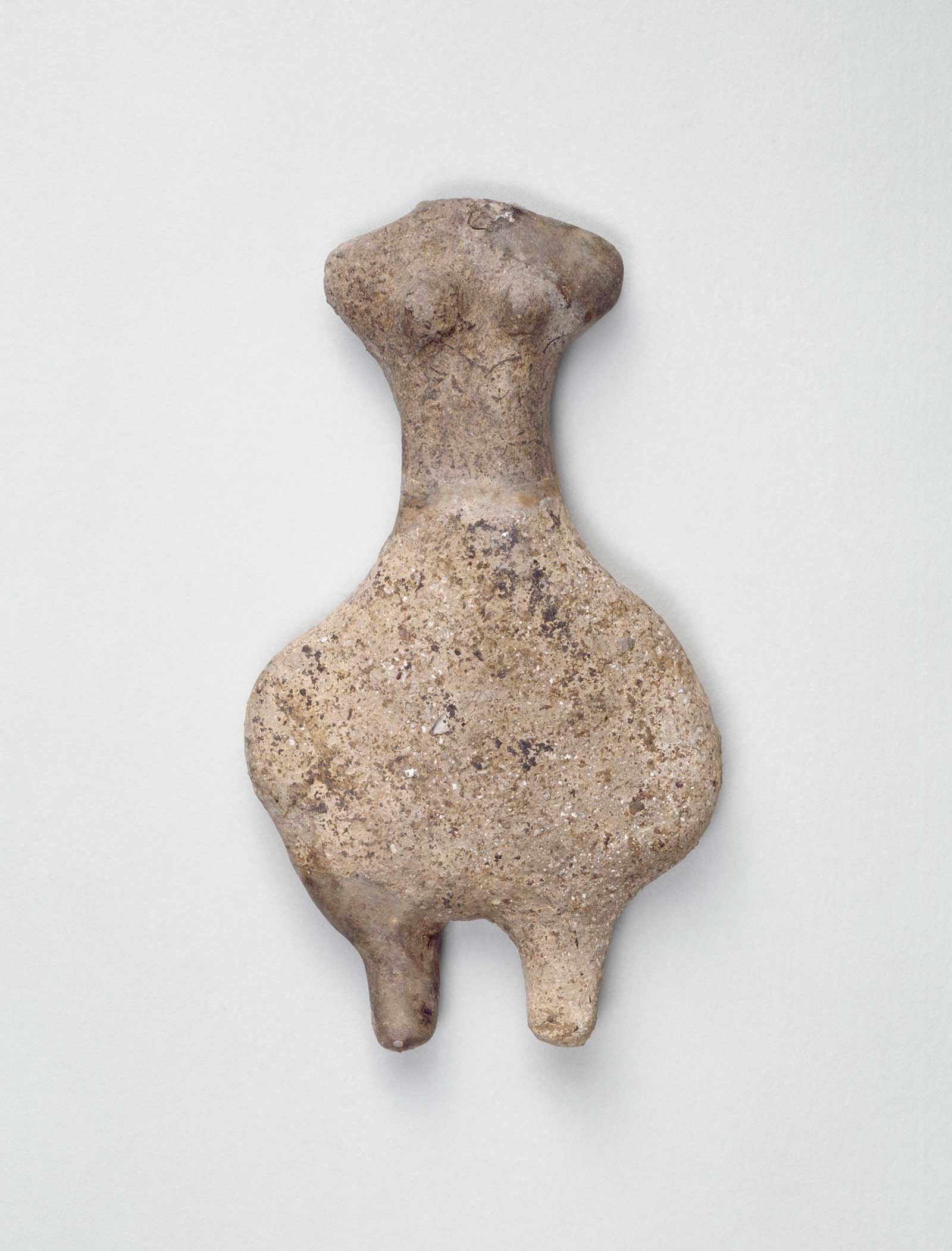
Anonymous, female statuette, neolithic (found on the site of Fort Harrouard, Sorel Mousson, France)
COURTESY: Musée d’Archéologie Nationale, Saint Germain-en-Laye © RMN-Grand Palais (MNAAG, Paris) / Michel Urtado
While the exhibition doesn’t necessarily elevate ceramics – indeed, the all-encompassing breadth of exhibits is determinedly egalitarian – it captures how the medium has been embraced since prehistoric times. From Picasso, Fernand Léger and Lucio Fontana to Theaster Gates, Simone Leigh and Mimosa Echard, it is open to reinvention and endless forms of expression.
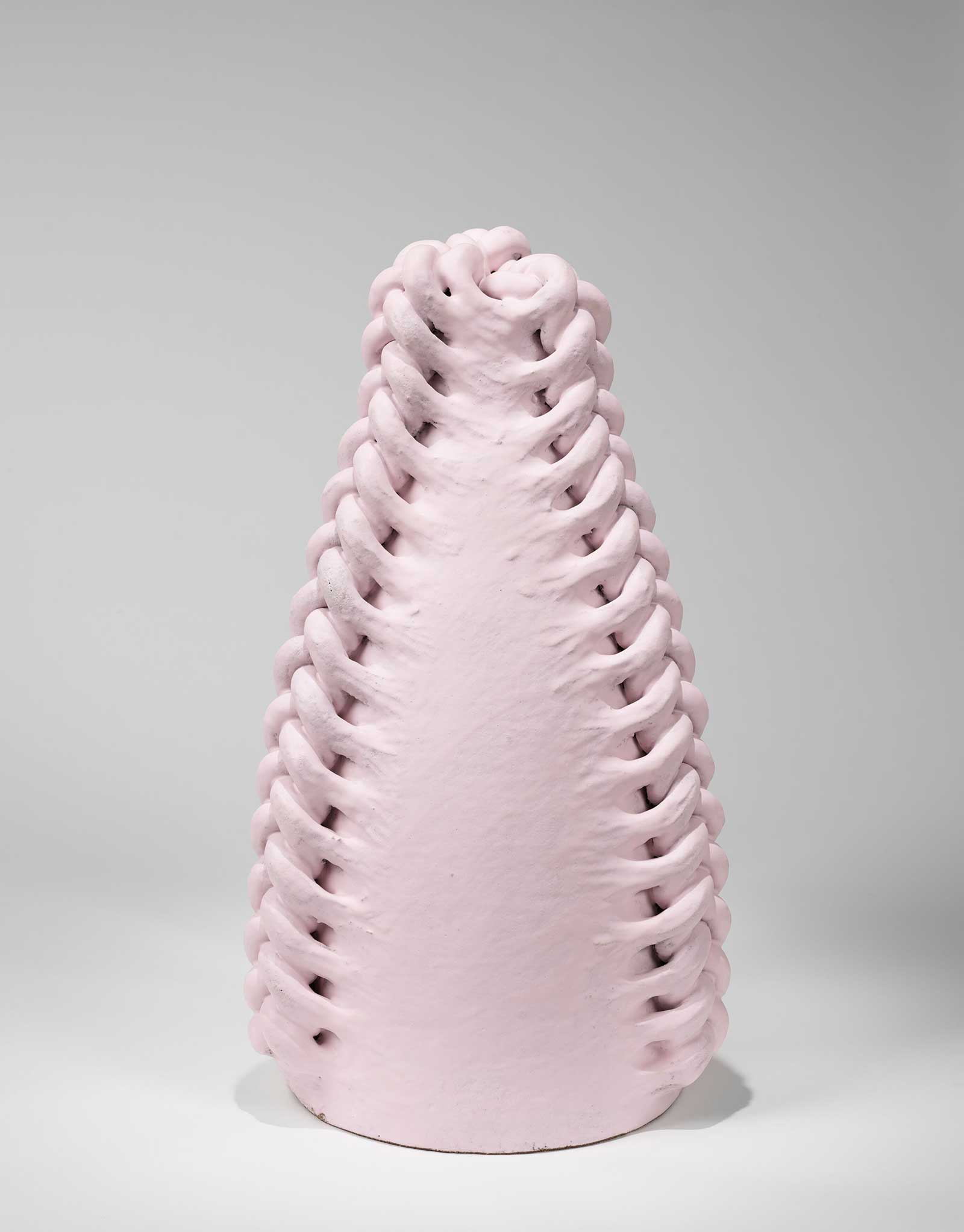
Simone Leigh-Village, ‘Village Series’, 2020
COURTESY: © Simone Leigh-Village + Hauser & Wirth, Zurich, Gstaad, London, Hong Kong, New York, Los Angeles / PHOTOGRAPH: Thomas Baratt
Les Flammes (The Flames): The Age of Ceramics at the Musée d’Art Moderne de la Ville de Paris.




